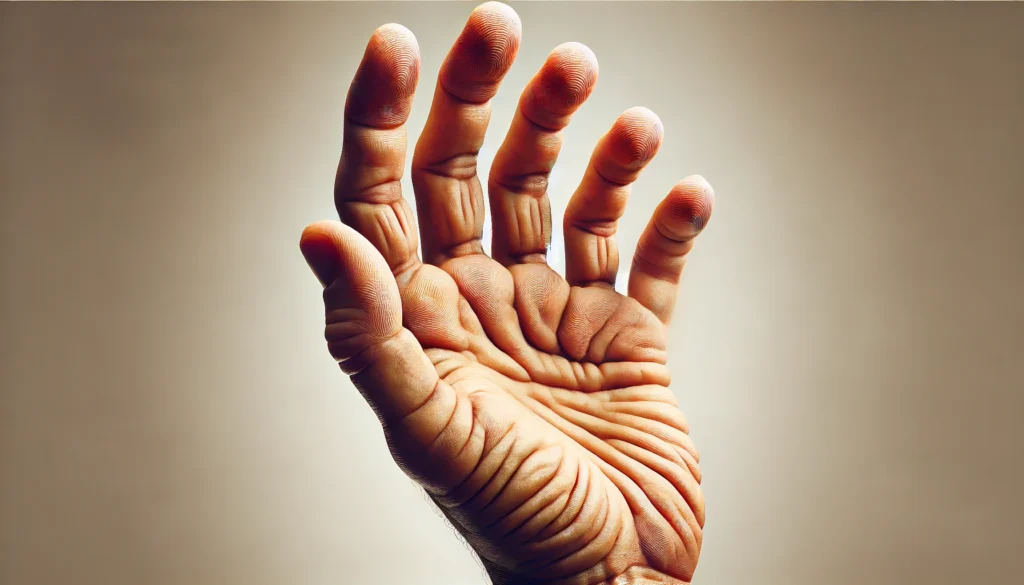Introduction
Loguytren problems, also known as Dupuytren’s contracture, are a condition affecting the connective tissue in the hand, causing it to thicken and form nodules that can lead to restricted movement of the fingers. This condition often starts gradually and can be challenging for individuals who experience it, as it hinders their ability to perform everyday tasks. The progressive nature of the disease can lead to permanent contracture of the fingers, which makes it difficult to fully extend them. While the condition is not life-threatening, it can significantly impact a person’s quality of life, especially in terms of mobility and hand function.
Understanding Loguytren problems is crucial for those who are experiencing symptoms or have been diagnosed. Early intervention can prevent the condition from worsening and provide patients with various treatment options to manage their symptoms. Additionally, knowing the causes, signs, and treatments available can help individuals make informed decisions about their healthcare. In this article, we will explore the symptoms, treatment options, and lifestyle adjustments that can help manage Loguytren problems.
What is Loguytren Syndrome?
Loguytren syndrome, commonly referred to as Dupuytren’s contracture, is a condition that primarily affects the fascia of the palm and fingers. The fascia is the layer of connective tissue that sits just beneath the skin and helps maintain the structure of the hand. In individuals with Loguytren syndrome, this tissue thickens and forms tough nodules that can pull the fingers toward the palm. Over time, this can result in permanent bending of the fingers, making it difficult to straighten them.
The exact cause of Loguytren syndrome is not fully understood, but several factors contribute to its development. Genetics play a significant role, as the condition tends to run in families. Individuals of Northern European descent, particularly those of Scandinavian or Celtic origin, are at a higher risk of developing Loguytren syndrome. Other risk factors include age, as the condition is most commonly diagnosed in individuals over the age of 50, and gender, with men being more likely to develop the condition than women. Additionally, those with a history of diabetes or alcoholism are also at increased risk.
While the condition is not typically painful in its early stages, the gradual tightening of the fascia can lead to significant discomfort and limitations in hand function as the condition progresses. Left untreated, Loguytren syndrome can severely affect an individual’s ability to perform daily activities that require the use of their hands, such as gripping, typing, or holding objects.
Common Symptoms and Signs of Loguytren Problems
The symptoms of Loguytren syndrome usually develop slowly and may begin with small, firm lumps in the palm of the hand. These lumps, known as nodules, are often painless but can feel tender to the touch. As the condition progresses, these nodules may form cords of tissue that extend into the fingers, causing the fingers to bend toward the palm. This is known as “contracture” and can make it increasingly difficult to fully extend the fingers.
The most common symptom of Loguytren problems is the inability to fully straighten the affected fingers. Early stages of the condition may only cause mild symptoms, such as difficulty with gripping or a slight bend in the fingers. However, over time, the condition may worsen, and the fingers may become permanently flexed, limiting the hand’s ability to function properly. In severe cases, the contracture may affect all fingers on one or both hands.
Other signs of Loguytren syndrome include the formation of “pits” or “dimpled” areas in the skin of the palm, which are caused by the thickening of the fascia. Some individuals may also experience stiffness or a feeling of tightness in the hand. It’s important to note that the condition typically affects the ring and pinky fingers, although it can also involve the middle finger in some cases.
If left untreated, Loguytren syndrome can severely affect hand function, making it difficult to perform tasks that involve grasping or fine motor control. If you notice any of these symptoms, it is essential to seek medical advice as soon as possible to prevent further progression of the disease.
Treatment Options for Loguytren Problems

There are several treatment options available for managing Loguytren syndrome, ranging from conservative approaches to more invasive surgical procedures. The choice of treatment depends on the severity of the condition, the individual’s age, and overall health.
Non-Surgical Treatments
In the early stages of Loguytren syndrome, conservative treatments can be effective in slowing the progression of the condition. One common non-surgical treatment is corticosteroid injections. These injections can help reduce inflammation in the affected area and provide temporary relief from symptoms. Although corticosteroids do not reverse the condition, they can help alleviate discomfort and prevent further thickening of the fascia.
Physical therapy and stretching exercises are also recommended for patients in the early stages of Loguytren syndrome. These exercises can help maintain the flexibility of the hand and prevent further contracture. Splints may also be used to help keep the fingers in a more neutral position, preventing further bending and improving hand function.
Surgical Treatments
In cases where the condition has progressed significantly, surgery may be required to release the contracture and restore hand function. There are several surgical options, including needle fasciotomy and dermofasciectomy. Needle fasciotomy is a minimally invasive procedure where a needle is used to break apart the thickened tissue in the palm. This procedure is typically performed under local anesthesia and has a relatively quick recovery time.
Dermofasciectomy, on the other hand, is a more invasive procedure that involves the removal of the thickened fascia. This procedure is often recommended for severe cases of Loguytren syndrome where the contracture is extensive. While it has a longer recovery time, it is more effective in preventing the recurrence of the condition.
Alternative Treatments
In addition to conventional medical treatments, some individuals turn to alternative therapies to manage Loguytren syndrome. These may include acupuncture, massage therapy, and natural remedies such as herbal treatments. While these alternative treatments may provide some relief, they are not a substitute for medical intervention and should be used in conjunction with other treatment options.
Managing Loguytren Problems in Daily Life
Living with Loguytren problems can be challenging, but there are several strategies that can help individuals manage the condition and improve their quality of life. One of the most important aspects of managing Loguytren syndrome is staying active and engaging in regular physical therapy exercises. These exercises help maintain flexibility in the hands and prevent further contracture.
For individuals who have undergone surgery or are experiencing more severe symptoms, lifestyle adjustments may be necessary. Using assistive devices, such as grip aids or specialized tools, can make daily tasks like opening jars or holding objects much easier. Additionally, patients should avoid activities that place excessive strain on the hands, such as heavy lifting or repetitive motions.
Psychological support is also essential for those coping with the emotional and social impact of Loguytren syndrome. As the condition progresses, individuals may feel self-conscious about their hand appearance or struggle with the limitations it places on their daily life. Seeking support from a therapist or joining a support group can help individuals feel more empowered and equipped to manage the emotional challenges associated with Loguytren syndrome.
Conclusion
Loguytren problems, while not life-threatening, can have a significant impact on an individual’s quality of life. Early diagnosis and intervention are key to managing the condition and preventing it from worsening. Whether through non-surgical treatments, physical therapy, or surgical procedures, there are various options available to help manage symptoms and improve hand function. By staying informed, seeking medical advice, and making necessary lifestyle adjustments, individuals can continue to lead active, fulfilling lives despite the challenges of Loguytren syndrome.
FAQs
What are the early signs of Loguytren syndrome?
Early signs include small, firm lumps in the palm, mild difficulty gripping objects, and slight bending of the fingers.
Can Loguytren problems be cured?
While there is no cure for Loguytren syndrome, treatment options such as surgery and physical therapy can help manage symptoms and prevent further progression.
Is surgery always necessary for Loguytren syndrome?
Surgery is usually recommended for more severe cases, but less invasive treatments such as physical therapy or corticosteroid injections may be effective in the early stages.
What lifestyle changes can help manage Loguytren problems?
Regular physical therapy, using assistive devices, and avoiding activities that strain the hands are all important lifestyle adjustments to manage the condition.
Are there any home remedies that can alleviate the symptoms of Loguytren syndrome?
While home remedies like massage therapy or warm compresses may provide some relief, they should be used in conjunction with medical treatment and are not substitutes for professional care.










